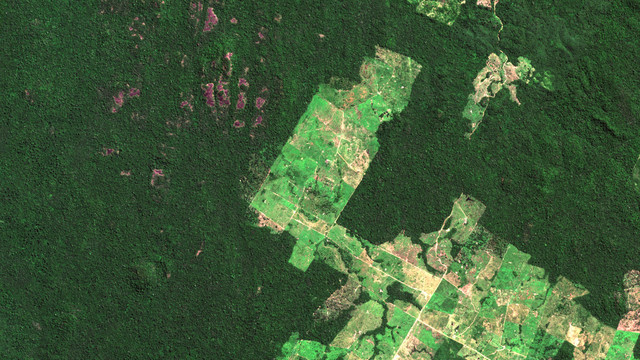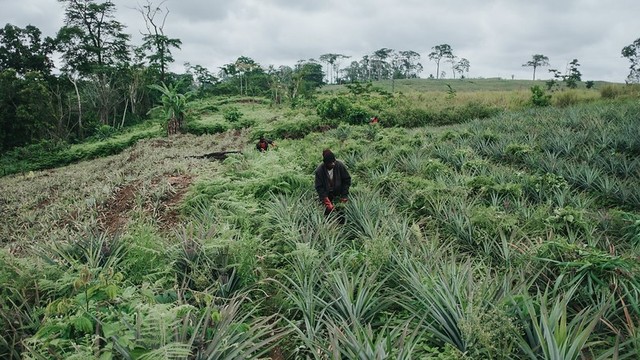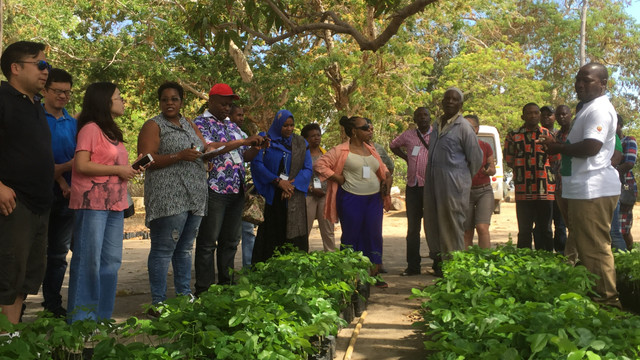The UN has declared 2011 as the international year of forests — although more than a billion forest-dependent poor will probably not see it that way. Spiralling global demand for food, energy, fibre and water spell trouble for these people’s forests.
Schemes for reducing emissions from deforestation and forest degradation (REDD) may have been agreed at last month’s climate talks in Cancun, Mexico, but without locally controlled forestry this, in itself, will not stop the pressure on our forests. If you listen carefully you can still hear the forest clock ticking down…
Tick. There are more of us.
Tock. The world’s population is set to rise from 6.4 billion in 2005 to 8.2 billion by 2030. More people mean more pressure on forests to meet our demands for food, fibre, energy and water.
Tick. We value ‘stuff’ and think that having more makes us happy.
Tock. Despite strong evidence that material wealth doesn’t make us happier (above a relatively low threshold), a US$450 billion advertising industry tells us otherwise — we are what we consume. Governments believe it and measure progress in terms of GDP, not ecological security, job satisfaction, sense of community, appreciation of beauty or cultural identity. The broader values of forests simply do not register.
Tick. We want to grow.
Tock. Feeding our perceived need for more ‘stuff’ requires economic growth. Global GDP is expected to grow from about US$47 trillion in 2005 to up to almost US$100 trillion by 2030 (assuming constant prices). Achieving this growth will require forests to be cleared and converted to more economically productive land uses such as soy bean, palm oil or cattle ranching.
Tick. We want cheaper goods.
Tock. In the search to cut production costs, developed countries reduced their agricultural land area, including pasture, by more than 412 million hectares (-34%) between 1995 and 2007. At the same time, they increased sourcing from elsewhere and developing countries saw an increase of nearly 400 million hectares (+17%). Not good news for our environment— it is in developing countries that the biodiverse tropical forests, which provide vital environmental ‘services’ such as regulating global climate and hydrological cycles, lie.
Tick. We don’t care how our ‘stuff’ is produced.
Tock. There are roughly 3.9 billion hectares of forests across the world. The UN Food and Agriculture Organization estimate that, between 2000 and 2005, the overall area of forest shrank by about seven million hectares per year. This would seem to suggest that deforestation is slowing down — annual forest loss from 1990–2000 was nearly nine million hectares — but the figure is misleading. Increasing rates of deforestation in biodiverse natural forests are hidden by afforestation elsewhere. We are not replacing like with like. Massive monoculture plantations are the order of the day in countries such as China as corporate capitalism tries to squeeze the things that forests produce out of increasingly small areas of land.
Tick. We believe technology can fix it.
Tock. It is true that technology is helping us to use fewer resources to produce more (‘relative de-coupling’). For example, in 2006–2007, India’s GDP grew by 8 per cent with only 3.7 per cent growth in its total primary energy consumption. But it is not the efficiency with which we use resources that ultimately matters — it is the total scale of our resource use. Population growth and rising affluence are massively increasing our total resource use, rapidly outpacing technological efficiency gains. ‘Absolute decoupling’ — where overall resource use falls as output expands — is not happening. It is also increasingly unlikely to happen, as the natural ecosystems that support production break down. For example, more frequent fires and outbreaks of pests and diseases are undermining the productive and carbon sink capacity of forests. In Canada, recent outbreaks of wildfire and insect pests have turned the country’s forests from a carbon sink to a source of carbon emissions, expected to last for the next three decades at least.
How do we stop the forest count down?
Short of an implausible massive reform of the global economic system, putting commercial control of forests into the hands of local people is our greatest hope of forests surviving the squeeze. Locally controlled forestry is essential because local people generally value forests for more than cash alone, which gives them a reason to manage it sustainably and resist converting forests purely to satisfy distant consumer demands within the global economy.
In most remote forest areas, local people are also the only ones who can actually control illegal or unplanned forest clearance. And experience shows it works. After 100 years of struggle in Sweden, hundreds of thousands of family forest owners not only sustainably manage multi-functional forest landscapes, but also control huge sustainable commercial sawmilling and pulp and paper companies. Satellite imagery in Brazil show that indigenous lands make up a fifth of the legal Amazon and remain 98.3 per cent preserved. Where clear rights have been granted in countries such as Mexico or Nepal, the impact on both forest protection and local livelihoods is positive.




